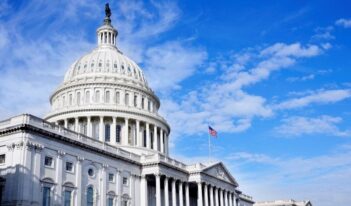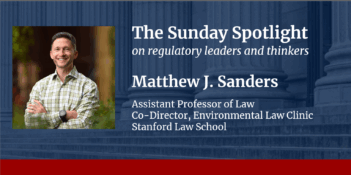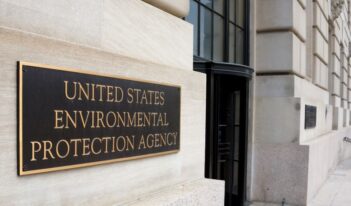
Journal article blaming “bad luck” for cancer is misleading, say other scientists.
Regulations curbing second-hand smoke, reducing air pollutants, and limiting certain food additives cost a significant amount to implement and enforce. But most would agree that the policies are a bargain for their central benefit: preventing cancer. Under these policies, cancer death rates in the United States have fallen steadily over the last two decades, saving an estimated 1.5 million lives.
A new study threatens to undermine these preventive public health regulations, according to some analysts.
The study’s authors – Christian Tomasetti and Bert Vogelstein of Johns Hopkins University – claim that two-thirds of cancer risk is due to “bad luck,” not lifestyle choices (e.g., smoking and diet) or environmental factors, which most preventive regulation addresses. It is now hotly debated whether the data in their study actually support this proposition or if their analysis supports a much less provocative claim – namely, that cell division rates explain two-thirds of the differences among types of cancer.
Reaching the correct scientific interpretation could hold implications for regulatory policy, say some experts. They warn that politicians and pundits may wield the study’s conclusions, and popular media’s interpretation of it, to support budget cuts in preventive programs ranging from the U.S. Environmental Protection Agency’s (EPA) clean air initiatives to local smoking ordinances.
What the Tomasetti and Vogelstein study found was that as a cell continues to divide there are more opportunities for the DNA to mutate. The more that normal stem cells divide in a given tissue over a person’s lifetime, the more often cancer invades that particular tissue. Hence, there is a greater risk of cancer in those tissues with cells that divide more frequently.
Because cell replication proceeds at different rates, certain tissue types are at greater risk for cancer than others. For example, lung stem cells replicate more often than brain stem cells, which partially explains why lung cancer is significantly more prevalent than brain cancer. But while the data provide significant support for an already well-known quantitative relationship between the risk of cancer and cell division, it does not illuminate what causes the cancerous mutations, say commentators.
Tomasetti and Vogelstein assert that their findings suggest that only a third of cancer risk is attributable to environmental or genetic factors. They claim that the major reason people get cancer is simply the “bad luck” of a random mutation during DNA replication.
In contrast, prevailing medical theory has long held that every cancer arises from some vulnerability of the cell or person, but that a cancer cannot develop without another intervening factor. Intervening environmental factors not only include pollutants, but potentially anything in the world, ranging from ultraviolet rays to fatty foods. So on one level, all cancers might be said to be caused by bad luck, in the sense that many people survive to old age cancer-free, while others are stricken with the disease. This does not necessarily mean, however, that two-thirds (or any particular fraction) of cancers are unrelated to causative factors, according to experts who recently submitted a series of letters to the editor of the journal, Science, in which the Tomasetti and Vogelstein study appeared.
The claim that cancer is caused merely by “bad luck” runs counter, the experts say, to over 50 years of epidemiologic research demonstrating populations exposed to certain carcinogens and industrial pollutants have a greater risk of certain cancers – and that reducing the use of those harmful substances reduces the risk of those cancers.
For example, Japanese immigrants’ experience with cancer illuminates how environmental factors can substantially affect rates among different cancer types. Japanese nationals have high rates of stomach cancer, but second generation Japanese-Americans have low stomach cancer rates but much higher rates of colon cancer. Presumably, the American environment or food supply causes an increase in the rate of one type of cancer and a decrease in another.
Although popular news sources have run with headlines that two-thirds of cancers are just bad luck, an interpretation Tomasetti and Vogelstein appear to have encouraged, major segments of the scientific community, including the World Health Organization, have recently condemned that conclusion.
Although data show that the relative variation in cancer risk between tissue types (e.g. lung compared to brain) can be explained by the variation in cell division speed, experts argue that it is misleading and inaccurate to claim that two-thirds of all cancer cases arise due to bad luck. The Tomasetti and Vogelstein study only compares tissue types, not cancer as a whole.
Adam Finkel, a public health scientist and Executive Director of the Penn Program on Regulation, suggested that an apt analogy would be to a grove of trees. Suppose the grove had two oak trees, two birch trees, and 96 elm trees, and a beetle infestation decimated all the birch and oak trees. While beetles have decimated two-thirds of the tree types, the plague has not stricken two-thirds of the trees as a whole, but only 4% of them.
Indeed, the cancer types that Tomasetti and Vogelstein’s study attributes to “bad luck” are more rare than those they do not. Tomasetti and Vogelstein’s research, experts say, merely quantifies the common-sense relationship between cell division rates and the baseline cancer risk – the latter being a risk that the environment profoundly influences.
Finkel suggested another analogy to a hypothetical study confirming the obvious point that the number of vehicles on a road could explain the differences in fatality rates between different road types. Suppose, he says, that one child ran out onto a quiet cul-de-sac chasing a ball and returned unscathed, but another child ran out onto an interstate highway where a car struck him. “The first child might indeed have been ‘lucky’ and the second ‘unlucky,’” Finkel said, “but a more reasonable inference would be that the second child encountered a much riskier situation – in other words, luck doesn’t cause cancer, carcinogens do.”
At the same time that experts raise scientific concerns about the Tomasetti and Vogelstein study, they also worry about what the study means for preventive cancer regulation. A variety of government policies are based on the perceived benefits of reducing the risk of cancer – ranging from the U.S. Occupational Safety and Health Administration’s rules limiting exposure to carcinogens in workplace air, to EPA restrictions on certain pesticides, to the wave of local ordinances banning smoking in workplaces, restaurants, and public places.
According to Finkel, the Tomasetti and Vogelstein study is likely to prompt a congressional oversight hearing assessing some of these regulations. He thinks it would be tempting for a member of Congress, for example, to seek to curtail the EPA’s research and educational programs to reduce radon levels in homes on the grounds that these policies cost more than they benefit the country.
Carcinogens, however, do cause cancer and preventive regulation has reduced cancer death rates, remind the experts. It is true carcinogens are more likely to cause cancer in rapidly dividing cells, but experts like Finkel warn that such a technical claim is not relevant to public policy. Using the study to stunt the growth of those policies or trim them down would be harmful and inconsistent with the weight of the scientific evidence, he argues.



